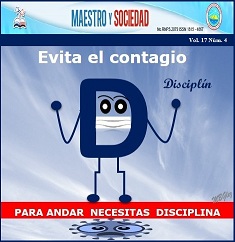Physical Education; interdisciplinary axis in the training of the Medium Technician in Civil Construction
Array
Keywords:
interdisciplinary axis, physical education, technical trainingAbstract
The article is the result of research that starts from the deficiencies that manifest in the integration of the contents of Physical Education for the specialty of Civil Construction. The objective of the research is the development of an interdisciplinary strategy that enables integration with other subjects of the curriculum. The results are specified in actions of physical exercises and games, an interdisciplinary strategy that address the logical relationship of these with the civil construction specialty from Physical Education to contribute to the professional and comprehensive training of students in order to establish simple integration, of easy understanding for the training of skills in their performance and their future working life. Research methods of the theoretical and empirical level were used.
References
2. Fernández, B. (2000) La interdisciplinariedad como base de una estrategia para el perfeccionamiento del diseño curricular de una carrera de ciencias técnicas y su aplicación a la Ingeniería de Automática. (Tesis de doctorado). Instituto Superior Politécnico “José Antonio Echeverría”, La Habana, Cuba.
3. Hernández, L. (2000). Una vía transdisciplinar sobre las NTIC para el desarrollo de las habilidades profesionales generales en los cursos de pos-grado. Santiago de Cuba: ISPJAM.
4. Mendoza, J. (2007). Concepción de la interdisciplinariedad en el plan de estudio “D” del Licenciado en Cultura Física curso 2005 – 2006. Santiago de Cuba: Facultad de Cultura Física.
5. Pagano, J. y Pérez, C. (2015). Interdisciplinariedad entre educación física y ciencias. (s.p.e.).
6. Pérez, C. y Pagano, J. (2018). Educación física interdisciplinar. Recuperado de http://hdl.handle.net/11323/1075
Published
How to Cite
Issue
Section
License
This journal provides immediate open access to its content, based on the principle that offering the public free access to research helps a greater global exchange of knowledge. Each author is responsible for the content of each of their articles.



























 Universidad de Oriente
Universidad de Oriente 